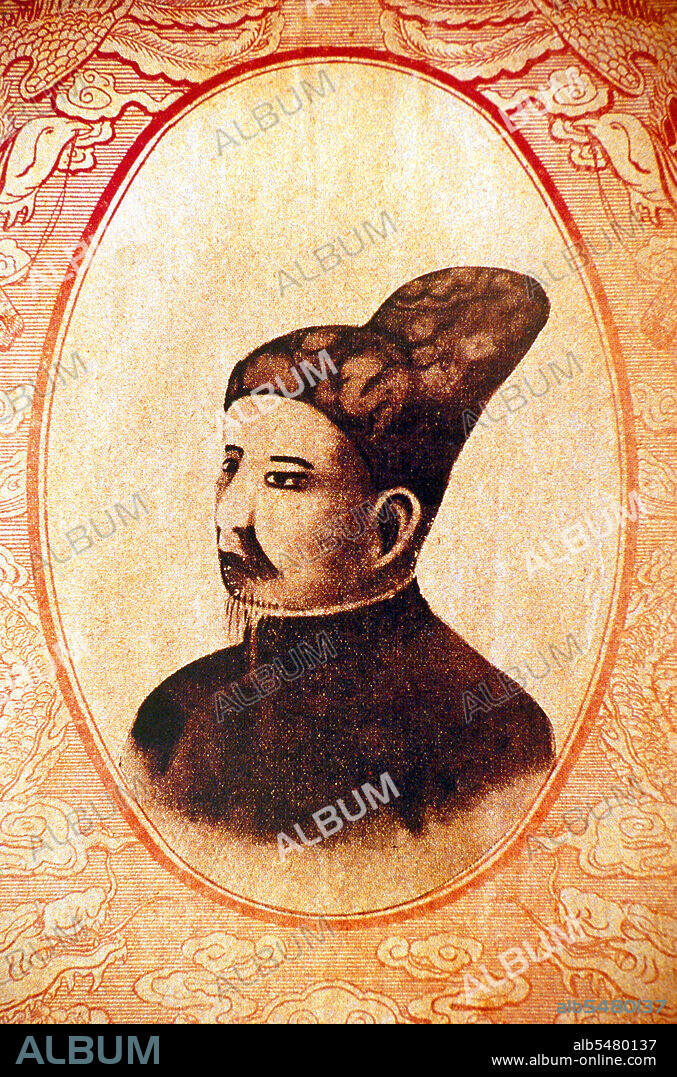alb5480137
Vietnam: Gia Long (8 February 1762 – 3 February 1820), founder and first emperor of the Nguyen Dynasty.

|
Ajouter à une autre Lightbox |
|
Ajouter à une autre Lightbox |



Avez-vous déjà un compte? S'identifier
Vous n'avez pas de compte ? S'inscrire
Acheter cette image

Titre:
Vietnam: Gia Long (8 February 1762 – 3 February 1820), founder and first emperor of the Nguyen Dynasty.
Légende:
Voir la traduction automatique
Emperor Gia Long (8 February 1762 – 3 February 1820), born Nguy?n Phúc Ánh (often referred to simply as Nguy?n Ánh), was an emperor of Vietnam. Unifying what is now modern Vietnam in 1802, he founded the Nguy?n Dynasty, the last of the Vietnamese dynasties. He reigned from 1802 - 1820. Gia Long's rule was noted for its Confucian orthodoxy. He repealed Tay Son reforms and reinstated the classical Confucian education and civil service system. He moved the capital from Hanoi south to Hu? as the country's populace had also shifted south over the preceding centuries, and built up fortresses and a palace in his new capital. Using French expertise, he modernized Vietnam's defensive capabilities. In deference to the assistance of his French friends, he tolerated the activities of Roman Catholic missionaries, something that became increasingly restricted under his successors. Under his rule, Vietnam strengthened its military dominance in Indochina, expelling Siamese forces from Cambodia and turning it into a vassal state.
Crédit:
Album / Pictures From History/Universal Images Group
Autorisations:
Modèle: Non - Propriété: Non
Questions sur les droits?
Questions sur les droits?
Taille de l'image:
3425 x 5184 px | 50.8 MB
Taille d'impression:
29.0 x 43.9 cm | 11.4 x 17.3 in (300 dpi)
Mots clés:
ASIE • ASIE, CONTINENT • CONTINENT ASIE • EMPEREUR • EMPEREURS • HISOIRE • HISTOIRE • MONARCHIE • ROYAUTÉ • SOUVERAIN EMPEREUR • TITRE, EMPEREUR • VIETNAM • VIETNAMIEN
 Pinterest
Pinterest Twitter
Twitter Facebook
Facebook Copier le lien
Copier le lien Email
Email
